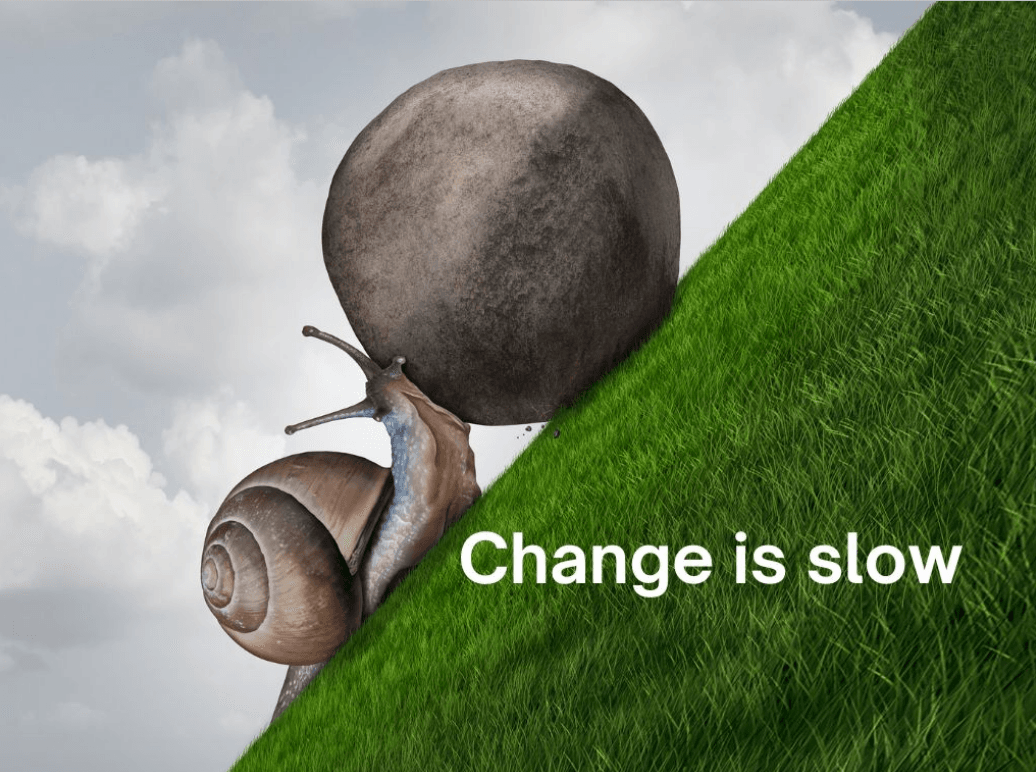Have you ever felt like your partner makes an effort to change—maybe they promise to communicate better, help out more, or be more present—but after a few days or weeks, they slip right back into old habits?
If you’ve ever thought, Why does my partner keep backsliding? Why do we keep having the same arguments?—you’re not alone.
This cycle happens for a reason, and if you don’t understand why it happens, you’ll keep repeating the same frustrations, feeling unheard, and wondering if things will ever really change.
The truth? Lasting change isn’t just about making a different choice—it’s about shifting the entire way you and your partner interact.
Why Some Changes Stick and Others Don’t
Most of us assume that if someone wants to change, they just will—as if love, awareness, or motivation should be enough to make them follow through.
But not all change is the same.
Behavioral Change vs. Developmental Change
Some changes are simple. If your partner never thought about something before, but now they’re aware, they might adjust quickly.
This is called behavioral change—a quick fix that’s as easy as deciding to make a different choice.
Examples of Behavioral Change:
✔️ Starting to wear your seatbelt.
✔️ Saying “thank you” more often after realizing you appreciate it.
✔️ Closing the kitchen cabinets instead of leaving them open.
These don’t require deep emotional work—once they understand it matters, they can implement it right away.
But what about the changes that never seem to last—like:
❌ Opening up instead of shutting down.
❌ Taking responsibility for household tasks without constant reminders.
❌ Following through on commitments instead of saying, “I’ll do it later.”
These seem like behavioral changes, but they actually require developmental change—a deeper shift in how someone relates to responsibility, emotional connection, or stress.
Why Developmental Change Is So Hard
If your partner struggles with follow-through, it’s likely because:
➡️ They haven’t built the habit of taking responsibility consistently.
➡️ When they’re stressed or distracted, their default mode kicks in—which means they forget, avoid, or shut down.
➡️ They don’t fully see it as their responsibility the way you do.
And let’s be real—how many times have you decided to do something differently, but when life got stressful, you went right back to old habits?
This happens because developmental change isn’t just about knowing what to do—it’s about being able to do it under stress, over time, until it becomes second nature.
How to Actually Get Lasting Change (Without Nagging or Resentment)
If your partner keeps slipping back into old habits, here’s what you can do:
Step 1: Change How You Respond (Set a Boundary Instead of Overfunctioning)
Most people try to fix this by reminding, nagging, or getting frustrated—then, when nothing changes, they just do it themselves.
But every time you step in and fix it, you send the message: You don’t actually have to change, because I’ll handle it.
Instead, you need to set a boundary that is about you—not about controlling them.
🔹 “I want to be in a relationship where household responsibilities feel balanced, and I don’t want to take on more than my fair share.”
🔹 “I’ve realized that when I keep stepping in, I feel resentful, and I don’t want that in our relationship. So I’m choosing to let go of managing this.”
This isn’t a demand—it’s a clear statement of what you need for yourself.
By framing it this way, you’re not saying “You have to change”—you’re saying “This is what I want in order to feel good in this relationship.”
Step 2: Expect Resistance (But Don’t Let It Throw You Off)
The first time you hold a boundary, your partner will push back.
They might:
- Ignore the dishes (hoping you’ll give in).
- Complain or make excuses (“I forgot, I was busy, why do you care so much?”).
- Do them, but with an attitude (cue dramatic sighing and aggressive plate stacking).
This doesn’t mean the boundary isn’t working—it means the system is shifting, and they’re testing it.
Your job? Hold steady.
✅ “I hear you, but I’m still not doing them.”
✅ “I trust you’ll handle it.”
If you start arguing, blaming, or emotionally reacting, the focus shifts from the boundary to the fight.
Step 3: Self-Soothe Instead of Taking Over
Here’s the hard part: If you’re used to managing everything, letting go will feel uncomfortable.
Your brain will scream, I can’t stand looking at the mess!
You’ll want to remind them, nudge them, or just do it yourself.
But every time you take over, you reinforce the old dynamic.
So what do you do instead?
🔹 Walk away—literally remove yourself from the situation.
🔹 Remind yourself, This discomfort is part of the process.
🔹 Redirect your energy—go for a walk, read, or call a friend.
The goal isn’t clean dishes—the goal is a lasting shift in responsibility.
Step 4: What If They Never Step Up?
Here’s something important: This process works best when your partner values the relationship enough to adjust—even if they never explicitly agree to change at first.
If your partner cares about fairness and connection, they’ll feel the shift and eventually step up. But if they:
❌ Have zero interest in changing,
❌ Don’t care about how their inaction affects you,
❌ Or fundamentally believe it’s not their job to contribute…
Then this boundary will reveal that.
At that point, you have a different decision to make.
Because you can’t force someone to care—but you can decide what you’re willing to tolerate in a relationship.
And sometimes, that’s the real work—not changing them, but getting clear on your own limits.


Leave A Comment
You must be logged in to post a comment.